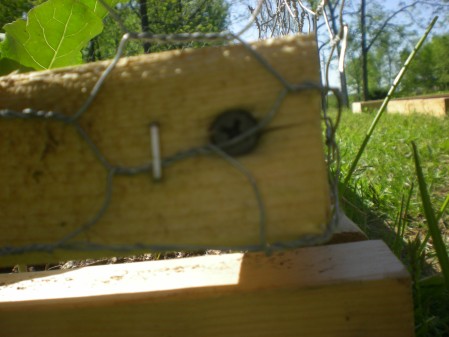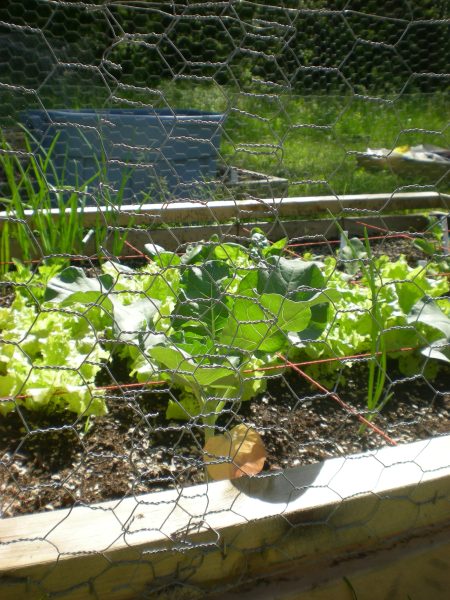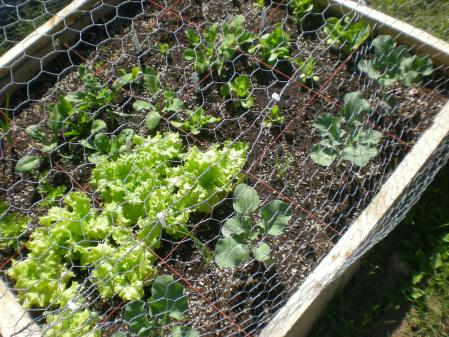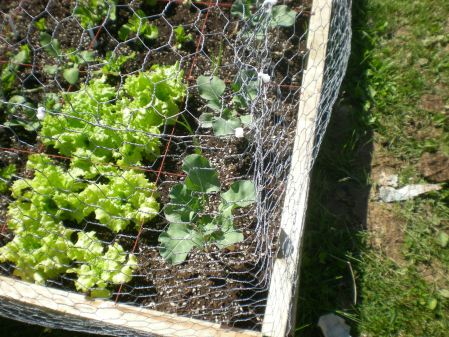We heard coyotes Sunday morning. When I say we, I mean I heard them, Tim heard them, and so did my mom. They sounded quite close to the house. It was around 4:30 in the morning and that might be why Mo woke up, too. She thought she heard dogs and said she wondered where the owners were. I told her I didn’t think they were dogs. Anyway, the two of us finally went back to sleep, but I kept hearing some kind of scratching going on by the coops. When I looked for tracks today, I didn’t see any by the coop so maybe I was hearing things. I did, however, see something walking around on the sidewalk between the house and garage. I think that was a possum. I also heard something step on a snapper (not the fish, but the tiny bags of gunpowder that you throw on the sidewalk so they pop). I hope the noise scared it away!
The other morning I went out to let the chickens out and there was a raccoon on the ground, dying. It was not dead, it was dying. I say this because I told Tom it was dying, but he didn’t seem to understand. He was in the office telling me what to do and I told him he had to come see it before he started telling me what to do with it. So then he comes down, looks at it, and says, “Oh, it’s not dead.” Yes, I said dying, not dead. So anyway Tim ended up taking care of it. I didn’t hear the whole story, but he used a shovel and moved it somewhere else to let it die, so it wouldn’t die near the house. Apparently he somehow put it out of its misery, which is not something I could easily have done.
About two weeks ago we lost a hen to a coyote. Or most likely to a coyote. Our electrician was working on some outlets in the office (did I ever describe Tom’s super cool office with a view?) and said he saw a wolf by the chickens. However, we don’t have wolves in this part of Illinois, but we have coyotes galore. So most likely it was a coyote, in the middle of the day, coming for a snack. So far they haven’t been back, but the chickens do make a lot of noise if they see something. It almost sounds like the noise they make when laying an egg except much louder and they are all making the noise at once. That was what they were doing when the electrician mentioned the “wolf.” They did it again one morning, but were safely in their coop so i did not go check anything out. And we’ve heard that noise a few other times and gone out and not seen anything. I’m sure they saw something, though. Perhaps their squawking scared off whatever it was.
We also seem to have wild turkeys nearby. We hear them around dusk and I can only assume they are making noises and roosting at that time of night. I wonder if that is what the chickens saw one morning? I can imagine they’d be scared of a wild turkey. Shoot, they are scared of my mother-in-law’s Yorkshire terrier. Speaking of critters I had best go see what the kids are up to. Plus, it is almost time to get the chickens in to keep them safe from critters.









